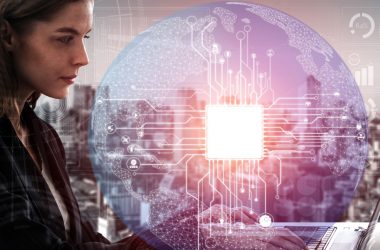Artificial Intelligence (AI) and Machine Learning (ML) are two of the most significant technological trends transforming the digital landscape. While often used interchangeably, these terms represent different, albeit interconnected, aspects of intelligent technology. Today we aim to elucidate the distinctions between AI and ML, offering an in-depth understanding of how these technologies function, their applications, and their impact on various industries.
Artificial Intelligence: An Overview
In its simplest form, AI refers to the simulation of human intelligence processes by machines, especially computer systems. It involves learning (acquiring information and rules for using the data), reasoning (using rules to reach approximate or definitive conclusions), and self-correction (improving algorithms based on outcomes).
AI can be classified into two main types: narrow AI, which is designed to perform a narrow task such as voice recognition, and general AI, which can perform any intellectual task that a human being can do.
ADVERTISEMENT
Applications of AI are numerous and span across different sectors, including healthcare (diagnosis, treatment suggestions), autonomous vehicles (navigation, safety systems), finance (fraud detection, investment strategies), and more.
Machine Learning: The Next Step
ML is a subset of AI that provides machines the ability to learn autonomously based on experiences, observations, and ingesting data. In essence, ML is the computational statistical process that makes AI possible and practical. It involves feeding algorithms large amounts of data, allowing the algorithm to adjust and improve.
Machine Learning itself has subsets, including neural networks, natural language processing (NLP), and deep learning. Each of these subsets offers a different path for machines and systems to learn and understand human behavior.
ADVERTISEMENT
Crucial Differences Between AI and ML
The primary difference between AI and ML comes down to their capabilities and purpose. While AI is about imitating and executing human-like intelligence and behavior, ML is about learning from data and making predictions or decisions without being explicitly programmed to do so.
For example, an AI-powered computer could play a strategic game like chess using predefined strategies and tactics. On the other hand, a machine learning model would analyze hundreds or thousands of chess games to understand and learn various strategies and predict the opponent’s moves.
Another important distinction lies in their functionality. AI devices will execute tasks intelligently, while ML systems adjust their processes based on the patterns they learn from data over time. Essentially, ML is the way to achieve AI.
ADVERTISEMENT
Impact on Industries: AI vs. ML
Both AI and ML have immense implications across multiple sectors, albeit in different ways.
In healthcare, AI is used for simulations and predictive analytics for diseases, while ML is used for predicting patient readmissions or disease outbreak trends. In finance, AI is used in chatbots for customer service, while ML is utilized for credit scoring and algorithmic trading. In education, AI could provide personalized learning experiences, whereas ML could predict student performance and dropout rates.
Future Trends: AI and ML
The technological advancements in both AI and ML are paving the way for more sophisticated applications that were previously unimaginable. While AI continues to advance in natural language processing, image and speech recognition, ML is making strides in predictive analytics, recommendation systems, and deep learning.
Conclusion
In the landscape of technology, understanding the difference between AI and ML is crucial for their effective application. While they have distinct functionalities, their interconnected nature means they often work together to create more efficient systems and solutions. AI is the broad concept of machines mimicking human abilities, whereas ML is the practical approach of training machines to learn from data and improve their performance. Both technologies are not only revolutionizing industries today, but are also the building blocks for future technological innovations.
Remember, the objective of these technologies is not to replicate human intelligence, but to create systems that can interpret and learn from complex data, solve intricate problems, and enhance human capabilities. As AI and ML technologies continue to evolve, we can expect to witness more breakthroughs that push the boundaries of innovation, leading to the creation of increasingly sophisticated tools and applications that can help us navigate the challenges and complexities of the modern world.

In terms of practical applications, AI is the framework that enables devices to execute tasks intelligently, such as understanding and responding to a specific command. ML, on the other hand, allows these intelligent systems to learn from their interactions, continually improving their performance over time.
Looking forward, as we dive deeper into the realm of AI and ML, we are likely to see increased integration of these technologies in our daily lives. For instance, in the field of healthcare, we can anticipate more advanced AI-driven diagnostic tools, coupled with ML algorithms capable of predicting health trends based on a wide range of data. In the realm of finance, we might witness more sophisticated AI-based trading systems that leverage ML models to adapt and respond to ever-changing market conditions.
As the nuances between AI and ML continue to unravel, we also have to pay attention to the ethical considerations that these technologies bring forth. While the potential benefits of AI and ML are immense, their responsible usage is of paramount importance. Ensuring that these technologies are developed and employed with a focus on transparency, fairness, and privacy is an ongoing imperative for all stakeholders involved.
Summary
In conclusion, AI and ML, while distinct in their mechanics and functionalities, are two sides of the same coin. They are interconnected fields that aim to make machines more intelligent and autonomous. Understanding their differences and how they complement each other can provide valuable insights, helping us leverage these powerful technologies to their fullest potential. As we continue to navigate the age of AI and ML, this understanding will be crucial in shaping a future where technology and human ingenuity work hand in hand, driving innovation and growth across all sectors.








